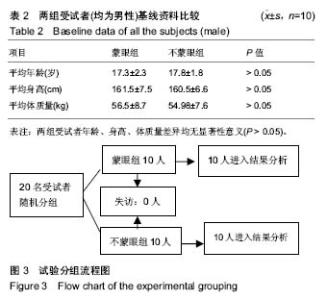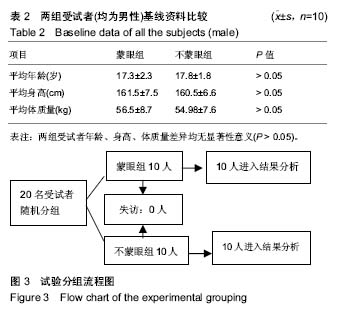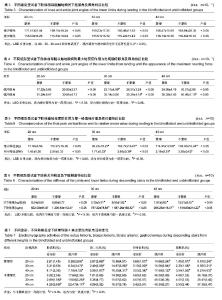| [1] Ludvig D, Plocharski M, Plocharski P, et al. Mechanisms contributing to reduced knee stiffnessduring movement. Exp Brain Res.2017;235:2959-2970. [2] Hobara H, Muraoka T, Omuro K, et al. Kneestiffnessisamajordeterminantoflegstiffnessduringmaximalhopping.J Biomech. 2009;42(11):1768-1771. [3] Debenham JR, Travers MJ, Gibson W,et al. Achilles tendinopathy alters stretch shortening cycle behaviour during a sub-maximal hopping task.J Sci Med Sport. 2016;19(1):69-73.[4] 罗炯.斜坡超速跑训练对短跑运动技术影响的生物力学分析[J].北京体育大学学报.2010,33(6):124-128.[5] Farley CT, Blickhan R, Saito J, et al. Hopping frequency in human: a test of test of how springs set stride frequency in bouncing gaits. J ApplPhysiol (1985). 1991;71(6):2127-2132.[6] Haber CK, Ritchie LJ, Strike SC. Dynamic elastic response prostheses alter approach angles andground reaction forces but not leg stiffness during a start-stop task.Hum Mov Sci. 2018;58:337-346.[7] G. Carretero-Navarro, G. Márquez. Effect of different loading conditions on leg stiffness during hopping at different frequencies. Science & Sports.2016;31:27-31. [8] Andrew R. Kemper. Response corridors for the medial–lateral compressive stiffness of the humanarm: Implications for side impact protection. Accid Anal Prev. 2013;50:204-222. [9] Keiner M, Sande A, Wirth K,et al. The impact of 2 years of additional athletic training on the jump performance of young athletes.Science & Sports.2014;29:39-46. [10] Man HS, Lam WK, Lee J, et al. Is passive metatarsophalangeal joint stiffness related to leg stiffness, vertical stiffness and running economy during sub-maximal running?. Gait & Posture.2016;49:303-308. [11] Kuitunen S, Kyröläinen H, Avela J, et al. Leg stiffness modulation during exhaustive stretch-shortening cycle exercise. Scandinavian.Scand J Med Sci Sports. 2007;17(1): 67-75.[12] Ruan MF, Li L. Approach run increases preactivation and eccentric phases muscle activity during drop jumps from different drop heights.J Electromyogr Kinesiol. 2010;20(5): 932-938. [13] Moritz CT, Farley CT.Human hopping on very soft elastic surface: Implication for muscle pre-stretch and elastic energy storage in locomotion. J Exp Biol. 2005;208(Pt 5):939-949.[14] Hobara H, Kanosue K, Suzuki S.Changes in muscle activity with increase in leg stiffness during hopping. NeurosciLett. 2007;418(1):55-59. [15] Granata KP, Padua DA, Wilson SE.Gender differences in active musculoskeletal stiffness. Part Ⅱ. Quantification of leg stiffness during functional hopping tasks.J Electromyogr Kinesiol. 2002;12(2):127-135. [16] Rapp, W. , &Gollhofer, A. Different levels of preinformation for motor programming in reactive drop jump conditions. Second World Congress of Biomechanics.1994;347:479-495. [17] Chastan N, Westby GW, du Montcel ST, et al. Influence of sensory inputs and motor demands on the control of the centre ofmass velocity during gait initiation in humans. Neurosci Lett. 2010;469(3):400-404. [18] De Bruijn E, Nijmeijer SWR, Forbes PA, et al. Dystonic neck muscles show a shift in relative autospectral powerduring isometric contractions. Clin Neurophysiol. 2017;128(10): 1937-1945. [19] Kwon EH, Block ME. Block.Implementing the adapted physical education E-learning programinto physical education teacher education program.Res Dev Disabil.2017;69:18-29. [20] Xu T, Huang CF. Biomechanical analysis of elementary school students in different heights.School of physical education. Taiwan Normal University.1997;4:95-107. [21] Shen Z, Seipel J.Animals prefer leg stiffness values that may reduce the energetic cost of locomotion. J Theor Biol. 2015; 364:433-438. [22] Panoutsakopoulos V, Papachatzis N, Kollias IA .Sport specificity background affects the principal component structureof vertical squat jump performance of young adult female athletes. J Sport Health Scie.2014;3:239-247. [23] Crenna P, Frigo C.Dynamics of the ankle joint analyzed through moment–angleloops during human walking: Gender and age effects.Hum Mov Sci. 2011;30(6):1185-1198. |



